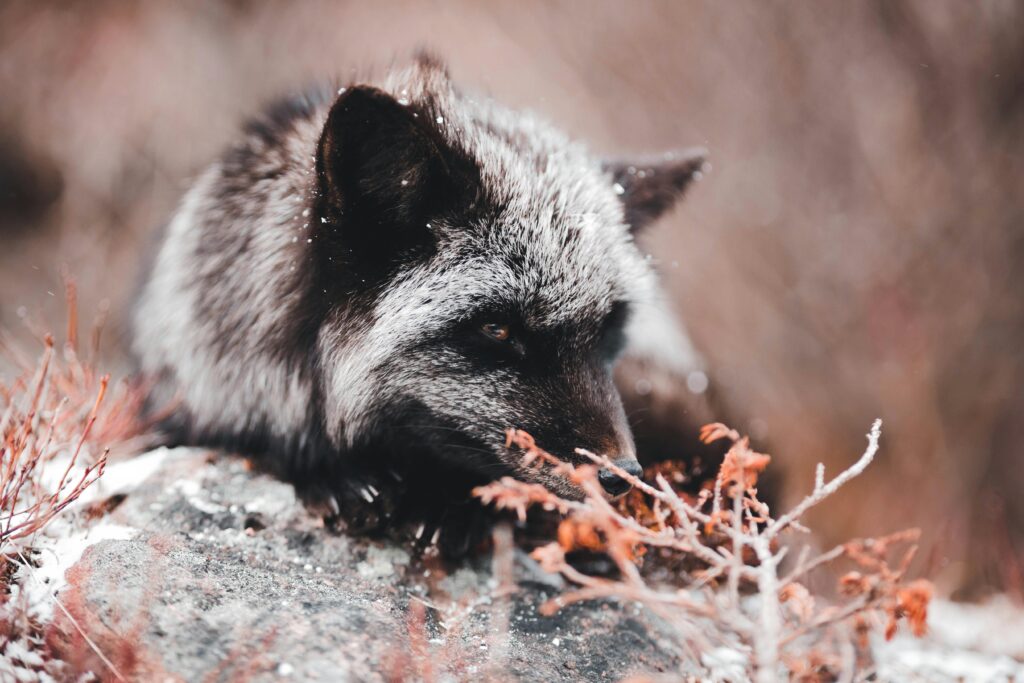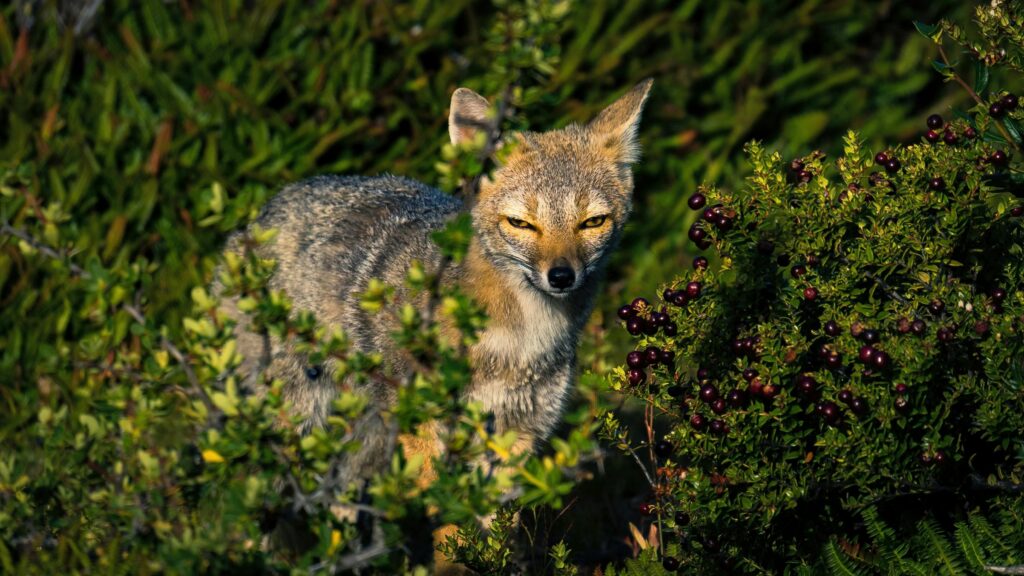Foxes are often seen as some of the most charming and elusive creatures in the animal kingdom. Known for their beauty, intelligence, and adaptability, they have captivated human imagination for centuries. Whether you’re lucky enough to spot one darting through the underbrush or hear their distinctive, haunting calls echoing in the night, foxes evoke a sense of mystery and wonder. In this article, we’ll take a deep dive into the captivating world of foxes, exploring their diverse species, behavior, diets, role in ecosystems, and cultural significance, as well as the conservation challenges they face.
1. The Different Species of Foxes
There are over 30 different species of foxes, but the red fox (Vulpes vulpes) is by far the most widely recognized and widespread species. It can be found across a vast range of habitats, from temperate forests and grasslands to arctic tundra, making it one of the most adaptable mammals on the planet.
While red foxes dominate much of the globe, several other fox species are equally fascinating:
Arctic fox (Vulpes lagopus)
Adapted to survive in the frigid Arctic, the Arctic fox is well-known for its thick, white winter coat, which helps it blend into its snowy surroundings. In summer, this coat turns a brownish-gray, providing camouflage in the tundra’s rocky landscape. Arctic foxes have specialized physiology that allows them to conserve heat in extremely cold environments and live in some of the harshest climates on Earth.

Fennec fox (Vulpes zerda)
Small and adorable, the fennec fox is a desert-dwelling species native to North Africa. It is famous for its oversized ears, which serve several purposes. Not only do they help the fennec fox hear its prey from a distance, but they also act as heat regulators, dissipating excess heat in the desert’s scorching temperatures.

Gray fox (Urocyon cinereoargenteus)
Unlike most fox species, gray foxes have the unusual ability to climb trees. Found primarily in North America, gray foxes use their climbing skills to escape predators, forage for food, and find shelter. Their bushy tails help them maintain balance while perched on branches or navigating rocky cliffs.

Kit fox (Vulpes macrotis)
This smaller species of fox, native to the southwestern United States, has long legs and large ears, which help it survive in the arid desert environment by regulating its body temperature.
Each species of fox has adapted uniquely to its environment, and their physical features reflect the specific challenges they face in the wild.

2. Physical Features and Adaptations
Foxes are relatively small to medium-sized mammals, and though they come in a variety of shapes and colors, they share several key features that contribute to their survival. One of the most notable is their long, bushy tail, also known as the “brush.” The tail serves multiple purposes:
- Balance: The bushy tail helps foxes maintain their balance when running at high speeds, climbing trees, or navigating rough terrain.
- Thermoregulation: In colder climates, foxes curl up with their tail wrapped around their body, providing warmth and insulation against chilly temperatures.
- Communication: The tail is also a means of communication, helping foxes signal their emotional state to other members of their species. For example, a fox might raise its tail when feeling threatened, or lower it to convey submission.
Foxes also have sharp, pointed ears and elongated snouts, both of which contribute to their heightened senses. Their acute sense of hearing allows them to detect the slightest sounds, such as the movement of small prey in the underbrush. Similarly, their keen sense of smell helps them locate food and navigate their environment.
Additionally, many species of foxes have evolved specialized fur to blend into their environments. For example, the Arctic fox’s fur changes color with the seasons, providing camouflage in both snowy landscapes and the summer tundra. In urban environments, foxes may have more muted fur colors, blending in with the darker, grayer cityscapes.
3. Behavior and Diet
Foxes are omnivores, meaning they eat both plants and animals. Their diet is highly varied and can include small mammals, birds, insects, fruit, and berries. Red foxes, for example, have a flexible diet, often feeding on rabbits, rodents, and birds, but they will also scavenge for food like fruit, nuts, and garbage if necessary.
Foxes are primarily solitary hunters, relying on stealth, patience, and intelligence to catch prey. They often hunt alone and use a method called “stalking” or “ambush hunting”, in which they approach their prey quietly, often stalking through tall grass or dense underbrush. Foxes are also opportunistic scavengers, which means they will make use of whatever food they can find, whether it’s a small rodent, an injured bird, or leftovers from human settlements.
In addition to their hunting ability, foxes are resourceful and intelligent. They have an impressive range of vocalizations, including barks, screams, and howls, which they use to communicate with other foxes. For example, a fox might use an “explosive” scream to defend its territory or warn others of danger. These calls are especially prominent during the mating season.
Some species, such as the red fox, will also engage in food caching—burying food they don’t immediately need so they can eat it later, a behavior that demonstrates foresight and problem-solving skills.
4. Foxes in the Wild vs. Urban Environments
While foxes are often associated with remote woodlands and open fields, they have shown remarkable adaptability to urban environments. In fact, many species, particularly red foxes, have flourished in cities and suburbs. Urban foxes have learned to take advantage of the abundant food sources available in human settlements, such as garbage, pet food, and discarded food in public parks.
Urban foxes tend to be more nocturnal than their rural counterparts. This behavioral shift is likely due to the increased presence of human activity during the day, making nighttime a safer time to forage for food. In some areas, urban foxes have been known to frequent gardens, parks, and even public squares, where they can find both shelter and sustenance.
However, life in the city also presents challenges. Urban foxes face the dangers of traffic, pollution, and human-wildlife conflicts, including being trapped in buildings or caught in fences. Despite these challenges, foxes have demonstrated an impressive ability to adapt to their surroundings, and some have even become more comfortable in the presence of humans, displaying less fear than their rural counterparts.
5. Foxes in Myth and Culture
Foxes have long played a prominent role in folklore, mythology, and human culture. In many cultures, they are symbolic of cunning, intelligence, and trickery. The fox’s ability to outwit predators and prey alike has made it a recurring figure in stories and fables throughout history.
- In European folklore, the fox is often portrayed as a clever trickster, outwitting both humans and other animals. One of the most famous fox figures is Reynard the Fox, a character in medieval literature who embodies wit, guile, and cleverness. Reynard’s adventures are filled with cunning tricks to escape danger or take advantage of other animals.
- In Native American cultures, foxes are often seen as wise and spiritual beings. They are associated with agility, adaptability, and quick thinking. In some tribes, the fox is considered a messenger or a spiritual guide, embodying the ability to navigate the changing world with grace and intelligence.
- In East Asian cultures, foxes take on a more mystical or supernatural role. In Chinese and Japanese mythology, foxes (or “kitsune” in Japan) are thought to possess magical abilities. Kitsune, for instance, are said to have the power to shapeshift, often transforming into beautiful women, and are believed to be both protectors and tricksters.
In modern times, foxes continue to be popular in literature, art, and media, from animated films like Fantastic Mr. Fox to representations in advertising, where they are often associated with cleverness and resourcefulness.
6. Conservation and Threats
Although foxes are not currently classified as endangered, they face several threats to their survival. Habitat loss is one of the most significant challenges for foxes, as urban expansion, deforestation, and agriculture continue to encroach on their natural habitats. Additionally, foxes can be vulnerable to road traffic, which is a leading cause of injury and death for urban foxes.
In some regions, foxes are also hunted for their fur or sport. Fox hunting has been a controversial practice, especially in countries like the UK, where hunting with dogs was historically a part of tradition. Today, some countries have implemented regulations to protect foxes from indiscriminate hunting.
Despite these threats, many fox populations remain stable, and in some areas, they have even thrived in response to changing landscapes. Conservation efforts are largely focused on preserving natural habitats, reducing human-wildlife conflicts, and educating the public about the ecological role of foxes.
7. Final Thoughts
Foxes are extraordinary creatures that exemplify intelligence, adaptability, and resilience. From their varied species and physical traits to their cunning hunting methods and cultural significance, foxes are far more than just beautiful animals in the wild—they are powerful symbols of survival, resourcefulness, and the complexity of nature.
As we continue to urbanize and alter natural landscapes, it’s important to consider the impacts on the wildlife around us, including the foxes



